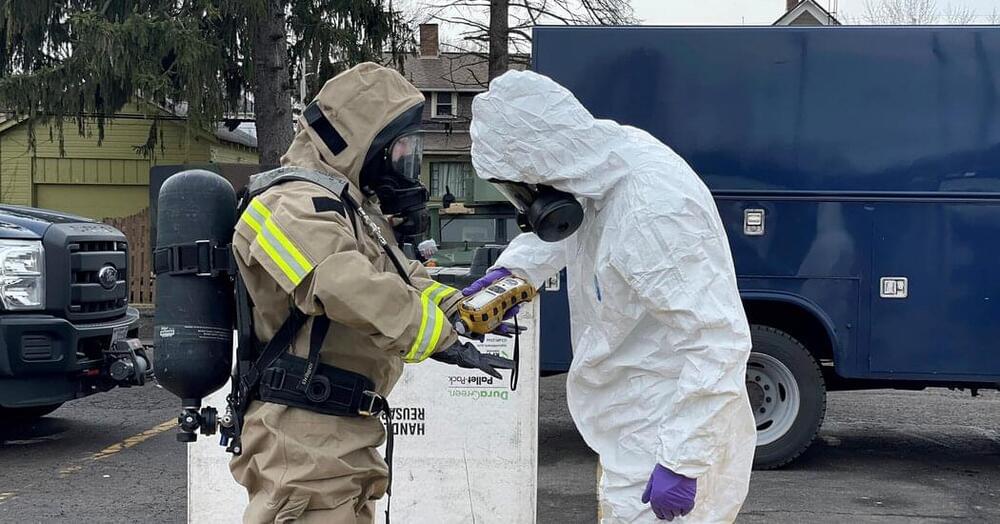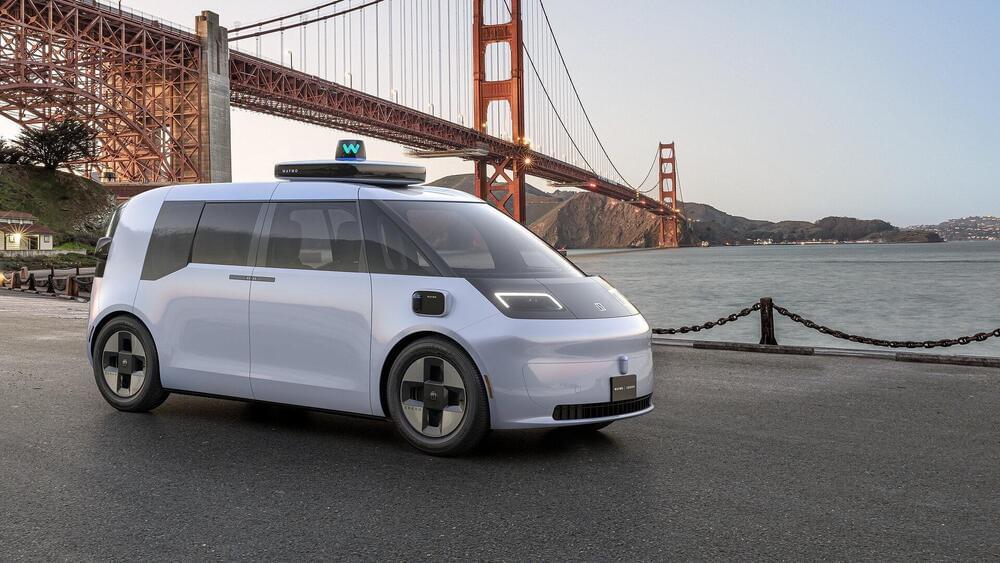The train was carrying industrial materials used in plastics, paint thinners and other products, according to information provided to the federal government.



Inside the mall, customers’ avatars will find Carrefour, VOX Cinemas, THAT Concept Store, Ghawali and Samsung Store, “with many more brands and exciting features in the pipeline”.
Announced at the World Government Summit, the mall is in the initial phase of development as the group looks “closely” at customers’ needs and expectations.
Khalifa bin Braik, CEO of Majid Al Futtaim Asset Management, said the Mall of the Metaverse will be a leading retail and entertainment destination — “and surely a huge attraction for customers who crave digital experiences from their most loved brands”.

Even more extraordinary, during a 2021 interview on CBS 60 Minutes, former Navy pilots David Fravor and Alex Dietrich provided a detailed description of their encounter with a UAP while conducting pre-deployment training with the USS Nimitz aircraft carrier strike group in 2004. While flying their F/A-18F Super Hornet aircraft, they initially observed an area of roiling whitewater on the ocean surface below them. Hovering just above that was a “white Tic Tac looking” UAP. The whitewater may have indicated the presence of a larger UAP below, or that the UAP they were observing had recently emerged from the sea below it, indicating the occurrence of unidentified undersea phenomena (UUP).
The implications of these observations are profound. Society may be on the verge of answering one of the greatest questions regarding our existence — are we alone? Yet, the vast majority of established scientists across the globe have shown little interest, and this remains the case with the ocean science community.
How is it that these anomalous observations have not risen to the level of other science priorities, such as climate change? Simply put, stigma. The attention given by many non-scientific, fringe enthusiasts to the UAP arena has tainted the topic, repulsing those who rightly seek to maintain their scientific integrity and professional reputation. Additionally, the U.S. government thwarted objective analysis of UAPs out of a concern that adversaries would use them as a psychological warfare tool to sow mass hysteria and panic.
A city that’s the size of a planet! Join us, and find out more!
Subscribe for more ► https://wmojo.com/unveiled-subscribe.
In this video, Unveiled takes a closer look at a possible future for life on Earth — planet-sized cities! An Ecumenopolis is a proposed endgame for civilisation, and humanity could be very close to achieving it! But what would life be like inside one? And what would happen after it’s built??
This is Unveiled, giving you incredible answers to extraordinary questions!
Find more amazing videos for your curiosity here:
Parallel Universe Stories to Make You Question Reality — https://youtu.be/1QvShWXCHEQ
Is the Government Hiding Speed of Light Travel? — https://youtu.be/8h1LYN5REmU
0:00 Intro.
Is Director of the Division of Research, Innovation and Ventures (DRIVe — https://drive.hhs.gov/) at the Biomedical Advanced Research and Development Authority (https://aspr.hhs.gov/AboutASPR/ProgramOffices/BARDA/Pages/default.aspx), a U.S. Department of Health and Human Services (HHS) office responsible for the procurement and development of medical countermeasures, principally against bioterrorism, including chemical, biological, radiological and nuclear (CBRN) threats, as well as pandemic influenza and emerging diseases.
Dr. Patel is committed to advancing high-impact science, building new products, and launching collaborative programs and initiatives with public and private organizations to advance human health and wellness. As the DRIVe Director, Dr. Patel leads a dynamic team built to tackle complex national health security threats by rapidly developing and deploying innovative technologies and approaches that draw from a broad range of disciplines.
Dr. Patel brings extensive experience in public-private partnerships to DRIVe. Prior to joining the DRIVe team, he served as the HHS Open Innovation Manager. In that role, he focused on advancing innovative policy and funding solutions to complex, long-standing problems in healthcare. During his tenure, he successfully built KidneyX, a public-private partnership to spur development of an artificial kidney, helped design and execute the Advancing American Kidney Health Initiative, designed to catalyze innovation, double the number of organs available for transplant, and shift the paradigm of kidney care to be patient-centric and preventative, and included a Presidential Executive Order signed in July 2019. He also created the largest public-facing open innovation program in the U.S. government with more than 190 competitions and $45 million in awards since 2011.
Prior to his tenure at HHS, Dr. Patel co-founded Omusono Labs, a 3D printing and prototyping services company based in Kampala, Uganda; served as a scientific analyst with Discovery Logic, (a Thomson Reuters company) a provider of systems, data, and analytics for real-time portfolio management; and was a Mirzayan Science and Technology Policy Fellow at The National Academies of Science, Engineering, and Medicine. He also served as a scientist at a nanotechnology startup, Kava Technology.
Dr. Patel holds a US patent issued in 2005 and has authored over a dozen peer-reviewed articles in areas such as nanotechnology, chemistry, innovation policy, and kidney health.
Dr. Patel earned his Ph.D. in physical chemistry from the Georgia Institute of Technology, and has a bachelor’s degree in chemistry from Washington University in St. Louis.

Last month, the Federal Reserve rejected crypto bank Custodia’s application to join its ranks, casting doubt over whether the Office of the Comptroller of the Currency will give final approval to crypto companies Protego and Paxos’ applications for national trust bank charters.
“The U.S. government is using the banking sector to organize a sophisticated, widespread crackdown against the crypto industry,” Carter wrote.
“And the administration’s efforts are no secret: they’re expressed plainly in memos, regulatory guidance, and blog posts. However, the breadth of this plan—spanning virtually every financial regulator—as well as its highly coordinated nature, has even the most steely-eyed crypto veterans nervous that crypto businesses might end up completely unbanked, stablecoins may be stranded and unable to manage flows in and out of crypto, and exchanges might be shut off from the banking system entirely.”

An excellent overview of the story of how the U.S. responded to the COVID-19 pandemic along with suggestions for ways to continue making strides in combatting SARS-CoV-2 as well as how we may prepare for future emerging pathogens. The article provides an interesting case study on mechanisms of large-scale human organization, examines ways that we have succeeded in managing so many moving pieces, and explores ways that we could do better in the future. #nih #health #medicine #government #biotechnology
Investment, collaboration, and coordination have been key.
Francis Collins [email protected], Stacey Adam, […], Christine Colvis, Elizabeth Desrosiers, […], Ruxandra Draghia-Akli, Anthony Fauci, Maria Freire, Gary Gibbons, Matthew Hall, […], Eric Hughes, Kathrin Jansen, Michael Kurilla, H. Clifford Lane, Douglas Lowy, Peter Marks, Joseph Menetski, William Pao, Eliseo Pérez-Stable, Lisa Purcell, Sarah Read, Joni Rutter, Michael Santos, Tara Schwetz, Jeffrey Shuren, Timothy Stenzel, Paul Stoffels, Lawrence Tabak, Karen Tountas, Bruce Tromberg, David Wholley, Janet Woodcock, and John Young +29 authors +27 authors +22 authors fewer Authors Info & Affiliations
Science.

In the world of self-driving, the strong leaders are now Google/Alphabet’s Waymo, and GM’s Cruise. Both are headquartered in the San Francisco Bay Area, and both have thus been keen to deploy in the city of San Francisco itself. No wonder, it’s their hometown. Driving it is a challenge but an important one to handle. On the other hand, it doesn’t snow, though it faces fog. It’s a city that already has many people who don’t own cars, and it was the birthplace of ride-hail, first with the now-defunct Sidecar, then Lyft and Uber. It makes a lot of sense that they both want to be there.
Even so, the city of San Francisco and it’s agencies have not been too happy with the pilot deployments of these companies and recently wrote letters hoping to slow them down. This article examines the conflict between the companies and their city, considering not just the particular points of contention, but also what sort of relationship makes sense here and how to resolve conflicts going forward.
San Francisco doesn’t have the authority to regulate driving. That’s the California DMV. Ride services are under the authority of the California Public Utilities Commission. The federal government regulates the making, importing and selling of vehicles and keeping them safe.
The zombie fungus from “The Last of Us”… IS REAL! Join us, and find out more!
Subscribe for more ► https://wmojo.com/unveiled-subscribe.
In this video, Unveiled takes a closer look at the Cordyceps and Ophiocordyceps fungi — otherwise known as the zombie ant fungus! This gruesome parasite is the inspiration for “The Last of Us”, the hit video game and TV adaptation… but, what’s REALLY incredible is that it’s NOT science fiction! It really exists on Earth! So, how worried should we be?
This is Unveiled, giving you incredible answers to extraordinary questions!
Find more amazing videos for your curiosity here:
Quantum Theory PROVES You Never Die — https://youtu.be/78onGajtyZw.
Is the Government Hiding Speed of Light Travel? — https://youtu.be/8h1LYN5REmU
0:00 Intro.

When U.S. Rep. Jake Auchincloss decided to deliver a speech on a bill that would create a U.S.-Israel artificial intelligence center, he opted to let the AI do the talking.
The brief two-paragraph speech read by the Massachusetts Democrat on the floor of the U.S. House on Wednesday was generated by the online AI chatbot ChatGPT. His staff said they believe it’s the first time an AI-written speech was read in Congress.
Auchincloss said he prompted the system in part to “write 100 words to deliver on the floor of the House of Representatives” about the legislation. Auchincloss said he had to refine the prompt several times to produce the text he ultimately read.